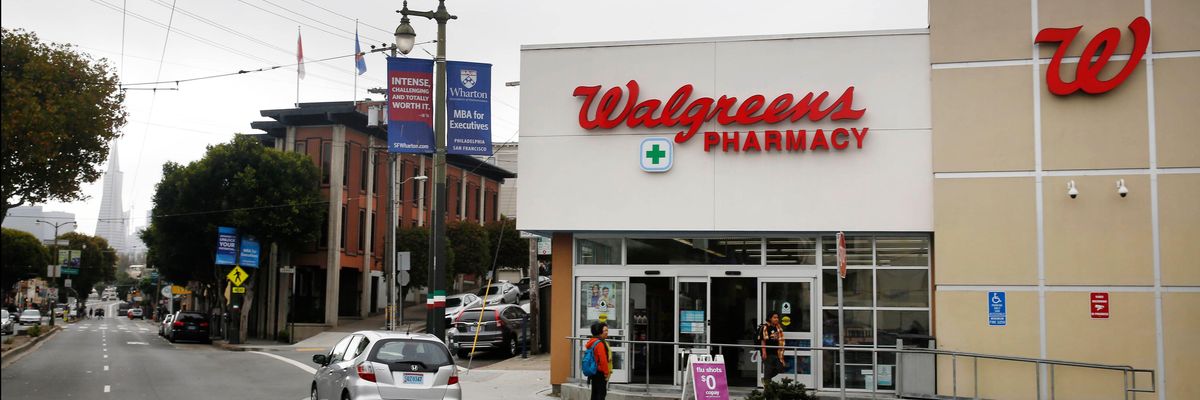Employees are staging walkouts at some of the biggest pharmacy retail chains in the country. A string of pharmacies closed at CVS in Kansas City. Later pharmacists held walkouts at Walgreens. More recently, an estimated 4,500 pharmacy workers from all three of the biggest chains, CVS, Walgreens and Rite Aid, announced participation.
#Pharmageddon is trending in nationwide protest. Pharmacy Guild, a new worker empowerment project, announced its efforts to unionize. With the recent news of the SAG-AFTRA strike ending, and the United Auto Workers declaring victory in new contracts, there is hope agreements can be made for resolution.
I worked as a community pharmacist early in my career more than 20 years ago. I dreaded times when I was alone in the pharmacy—every shift—haphazardly filling prescriptions while getting tied up on the phone adjudicating insurance claims, all the while running from one end of the pharmacy to another inputting, verifying, and dispensing prescriptions rapidly.
Every voice is needed to see positive legislation and improved conditions for pharmacies and to also encourage reform.
I was also answering doctor calls, attending to the drive-through, and hurriedly ringing up and counseling patients as fast as I could, without any help for half of my workday. Admittedly, I did not have the added stress of administering vaccinations while performing those duties at that time.
Pharmacy walkout momentum has been on the rise since 2021. Chronic understaffing coupled with higher prescription volume and growing additional duties exacerbated by the Covid-19 pandemic, with vaccinations and rapid test appointments, have led to unsafe working conditions for both employees and patients.
Additionally, abusive business practices by pharmacy benefit managers have not only resulted in thousands of pharmacy closures nationwide, but inflation in the amount paid for prescription drugs by seniors due to a loophole in Medicare regulations. According to Centers for Medicaid & Medicare Services, retroactive direct and indirect remuneration fees have increased by 107,400% between 2010-2020.
To be sure, drugstore chains have been struggling over the years with rising competition from mail-order pharmacies and lower reimbursement rates for prescription drugs, leading to the elimination of multiple locations and bankruptcy filings.
However, the pharmacy closures are now leaving gaps in communities for medicines and essentials. An assessment of pharmacy closures revealed one in eight pharmacies closed from 2009-2015, with pharmacies located in low-income, urban areas at greater risk of closing. The closures can create pharmacy deserts, further worsening the problem of disparities and access.
Pharmacists are highly skilled and trained, obtaining six to eight years of formal education with an additional one to two more years for possible post-graduate training. They enter the workforce eager to use their expert drug knowledge and provide patient-centered care.
For many, the excitement quickly dissipates in a highly volatile, pressurized environment. Inadequate staffing and burnout are truly a prescription for disaster.
The American Pharmacists Association supports workplace safety and well-being. The American Association of Colleges of Pharmacy is also in solidarity to improve working conditions.
Unlike other union strikes by autoworkers and SAG-AFTRA members, pharmacists participating in the walkouts are not asking to increase their salary. They are asking for better working conditions and a commitment to increasing staffing levels needed to perform their job safely and effectively for the patients they serve.
They are asking to not have to put patients’ lives at risk every day. They are asking not to have to place their mental health and well-being at risk every day. They are asking for improved work-life balance and sustainable working conditions to keep patients safe.
They are asking retail employers to do the right thing and set realistic goals for performance with adequate resources and staffing in place. They are asking pharmacy benefit managers to do the right thing and stop the assessment of exorbitant direct and indirect remuneration fees on retail prescriptions that are pushing pharmacies out of business.
It is not too much to ask.
As of January 1, 2024, the Centers for Medicaid & Medicare Services issued a final rule eliminating Part D plans’ and pharmacy benefit managers’ use of retroactive direct and indirect remuneration fees.
However, the first half of 2024 will still come with cash flow challenges for pharmacies, high fees, and low point-of-sale reimbursement during the transition, in addition to retroactive fees from 2023. More actions are needed to stop pharmacy benefit managers’ harmful business practices.
Every voice is needed to see positive legislation and improved conditions for pharmacies and to also encourage reform. From policy makers to elected officials, advocates, healthcare professionals, funders, pharmacists, retailers, customers, and citizens, everyone needs to acknowledge this urgency and make changes.
Community pharmacists need help now.

